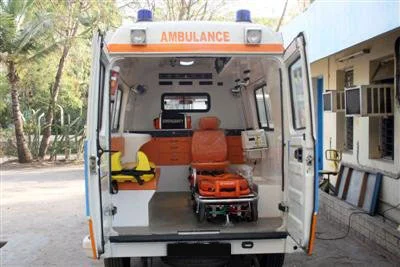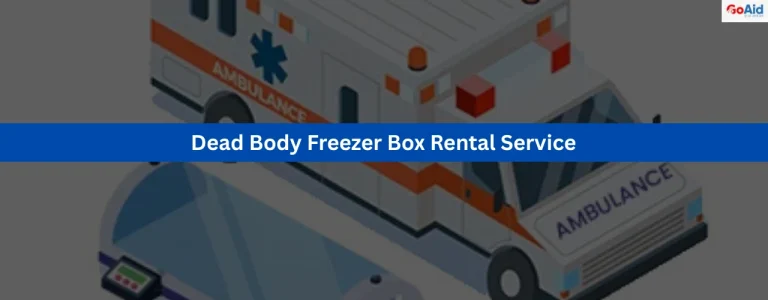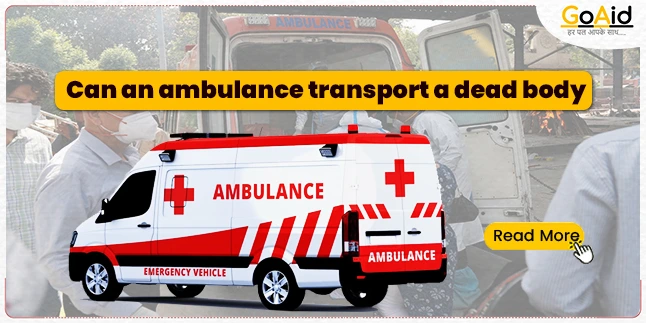In India, or any part of the world, sometimes we need immediate medical care with necessary ICU treatment onboard. This is why people got flabbergasted after seeing sudden growth in the launching of ICU Ambulances around the world.
However, the knowledge about ICU Ambulance Services to the people is very limited and somehow not extended to date. By this blog, we aim to help people by providing them with knowledge of ICU ambulances and their importance in Critical Care Transportation.
So, letŌĆÖs start-
What is an ICU Ambulance?

An ICU (Intensive Care Unit) ambulance is a specially designed and equipped ambulance service. ICU Ambulance provides critical care transportation for patients. Whenever patients need intensive medical attention, the ICU ambulance works great.
It serves as a mobile intensive care unit. This MICU helps patients to receive continuous monitoring and advanced life support during transit. An ICU ambulance is staffed with highly trained medical professionals. This ICU Ambulance includes paramedics, nurses, and in some cases, doctors, who are experienced in managing critical medical conditions.
The ambulance is equipped with state-of-the-art medical equipment. These equipments include ventilators, defibrillators, infusion pumps, and other life-saving devices. This ensures that patients receive the same level of care they would in a hospital’s intensive care unit.
ICU ambulances play a crucial role in saving lives and improving patient outcomes by providing timely and specialized medical care during transportation.
Components of an ICU Ambulance
If you are booking an ICU ambulance for you, then you can expect these instruments or types of equipment installed in your Booked ICU Ambulance:
1. Ventilator ŌĆō In an ICU Ambulance, a Ventilator is used to assist or control the patient’s breathing.
2. Defibrillator ŌĆō In an ICU Ambulance, Defibrillator is used to deliver controlled electric shocks to the heart in case of cardiac emergencies.
3. Cardiac Monitor ŌĆō In an ICU Ambulance, Cardiac Monitor is used to continuously monitor the patient’s heart rate and rhythm.
4. Infusion Pumps ŌĆō In an ICU Ambulance, Infusion Pumps are used to administer fluids, medication, or blood products at a controlled rate.
5. Oxygen Supply ŌĆō In an ICU Ambulance, Oxygen Supply Provides supplemental oxygen to patients with breathing difficulties.
6. Suction Device ŌĆō In an ICU Ambulance, a Suction Device is used to clear airways of secretions or other obstructions.
7. Resuscitation Equipment ŌĆō In an ICU Ambulance, Resuscitation equipment includes items like bag-valve masks for manual ventilation.
8. Medical Supplies ŌĆō In an ICU Ambulance, Medical supplies include items like syringes, needles, catheters, and bandages.
9. IV Lines and Fluids ŌĆō In an ICU Ambulance, IV Lines and Fluids are used for hydration and administering medication.
10. Blood Pressure Monitor ŌĆō In an ICU Ambulance, a Blood Pressure Monitor is used to monitor the patient’s blood pressure.
11. ECG Machine ŌĆō In an ICU Ambulance, an ECG Machine is Used to measure the electrical activity of the heart.
12. Emergency Medications ŌĆō In an ICU Ambulance, Emergency Medications are a stock of drugs used in various emergency situations.
13. Stretcher ŌĆō In an ICU Ambulance, Stretcher is a secure, comfortable stretcher used for patient transport.
14. Medical Fridges ŌĆō In an ICU Ambulance, Medical Fridges are used to store temperature-sensitive medications.
15. Pulse Oximeter ŌĆō In an ICU Ambulance, Pulse Oximeter is used to monitor the patient’s blood oxygen saturation levels.
Also Read: What to Expect During an Ambulance Ride: A PatientŌĆÖs Guide
The Importance of ICU Ambulances in Critical Care Transportation
The ICU Ambulance is very important for those who need immediate medical care to save their lives. We have listed some of the key importance which roll by ICU Ambulance all over the world:
1. Prompt Medical Attention: By reducing response time in emergencies, ICU ambulances ensure immediate medical care for critical patients.
2. Advanced Life Support: ICU Ambulances are equipped with state-of-the-art equipment. ICU ambulances provide advanced life support, mimicking the intensive care unit of a hospital.
3. Highly Trained Staff: ICU ambulances are staffed with experienced medical professionals. These professionals include paramedics and nurses, who specialize in critical care.
4. Continuous Monitoring: The medical equipment on board allows for real-time monitoring of the patient’s vitals, ensuring swift intervention if necessary.
5. On-site Stabilization: ICU ambulances can stabilize patients at the scene. This increases the chances of survival and improves overall outcomes.
6. Safe Transportation: ICU ambulances offer a secure and comfortable environment for patients. This ensures a smooth transition from the scene to the hospital.
7. Communication with Hospitals: The medical team can communicate with the receiving hospital. By this, they enable seamless handover of patient care upon arrival.
8. Emergency Medications: ICU ambulances can administer treatment en route because they are Stocked with a variety of emergency medications.
9. Specialized Transportation: ICU ambulances cater to patients with specific medical needs. These needs may include ventilator support or cardiac monitoring.
10. Reduced Hospitalization Time: By providing immediate critical care, ICU ambulances can reduce the time patients spend in the hospital. This leads to faster recovery.
11. Life-saving Interventions: ICU ambulances are equipped to perform life-saving interventions such as defibrillation and intubation during transportation.
12. Enhanced Patient Comfort: The advanced equipment and trained staff ensure that patients are as comfortable as possible. By this, they can reduce the stress and anxiety of patients.
13. Geographical Reach: ICU ambulances can reach remote areas. By this, they can provide critical care transportation to patients who may not have immediate access to a hospital.
14. Optimized Resource Allocation: ICU ambulances optimize the use of medical resources and personnel by providing care during transportation.
15. Community Trust: The availability of ICU ambulances fosters trust within the community, knowing that critical care services are accessible in times of need.

















